Soft fabric: description of the composition and scope

Every housewife's dream is a beautiful, soft and durable fabric that does not need to be ironed. Many textures and colors of very soft fabrics based on polyester fibers are united under the name "soft" and are of interest not only to housewives and seamstresses, but also to famous fashion designers, decorators and interior designers.

What it is?
Soft is the most delicate synthetic material that looks like velor. There are many varieties of this material - from delicate translucent fabrics to heavy opaque curtains.
Often this fabric is double-sided: one side is covered with pile (short or long, with or without shine, or with thermal printing), and the other is matte and smooth.
You need to choose the material very carefully when buying: soft is produced mainly in Turkey and China, so be sure to ask the seller for a quality certificate and carefully read the description of the composition and the manufacturer's address.

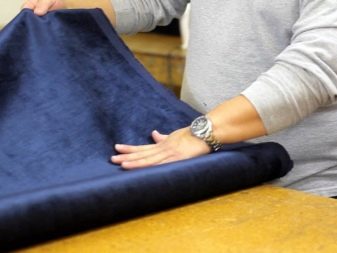
Also, due to the increased demand for such material, there are many fakes, and you can independently distinguish them only by a toxic smell or coloring matter.
Application area
Soft fabrics are very pleasant to the touch, dense, keep their shape well, perfectly withstand repeated washings, retaining their color and texture, therefore they are used in the manufacture of a wide variety of things and clothes.
These fabrics are used to sew:
- bed linen and pajamas for the whole family;
- children's textiles;
- home and casual dresses;
- costumes;
- mattress covers;
- furniture covers and cushions, upholstery for upholstered furniture;
- bedspreads and blankets;
- curtains and drapes.
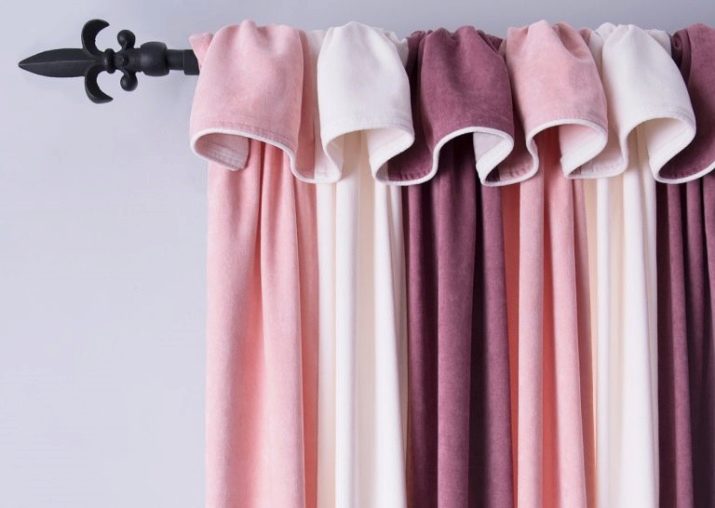



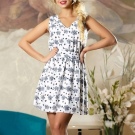

Everyone likes this material: tailors are attracted by the ease of working with it, housewives - by simple care of products, children love the pleasant texture of the softest fibers, and fashionistas are attracted by the variety of colors and textures.
Composition
The basis of any kind of software is polyester fiber, which can be either in pure form or with various impurities.
- Elastane It is used to give elasticity to the material in order to make tight-fitting and at the same time, clothing that does not restrict movement (mainly sports suits).
- Cotton or viscose added to synthetic fabrics to eliminate the electrification of fibers, improve air permeability and increase the hygroscopicity of matter.
- Nylon It is added to soft fabrics to obtain a fire-resistant fabric, which is mainly used as curtains in kindergarten and draperies in banquet halls.

Properties
All types of software have similar characteristics and properties.
Curtain fabrics are resistant to dirt due to a special stain-repellent impregnation, however, dust can accumulate on the fleecy side of the fabric, which can be easily removed at home. Also, polyester fibers are resistant to mold, odors, moths, mildew and dust due to special processing, but at the same time they are safe for health and hypoallergenic.
Soft fabric for upholstery has increased strength, wear resistance, but at the same time it can be easily draped due to its pliable structure.

Any soft fabric retains its shape well, does not fade and has a low degree of fiber shrinkage during washing, but it should be noted that it must be washed in warm water. Polyester fabrics have good stretch and easily return to their original condition due to the addition of elastic fibers.
The pattern on them remains clear and bright for many years, the fabric is resistant not only to washing powders and gels, but also to UV rays, which prevents even 3D printing from fading.
It is possible to cut the software both along the shared thread and along the transverse thread, which significantly saves money (for sewing curtains, a one and a half or double supply of fabric is enough instead of the usual triple supply to obtain beautiful folds) and time - for any cutting, the fabric does not crumble and remains pliable.

Another undoubted advantage of polyester fabrics is the absence of the need for ironing.
Views
Conventionally, software can be divided into 2 groups:
- textiles for sewing clothes (these are fabrics with additives of elastane, cotton, lycra or viscose);
- interior textiles (canvases that have undergone special treatment with various impregnations).
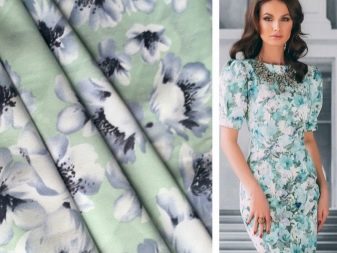

It is customary to distinguish many types of software, some of them contain 100% polyester, but they are obtained in different ways and differ in texture and properties.
- Velsoft is a fluffy comfortable knitted fabric with a pile of medium length for sewing home clothes, in appearance it remotely resembles a maker. It can be painted in pastel colors, but also brightly colored.
- Extrasoft - it is a light fluffy fabric with a short, fairly dense pile, used in the production of pillows, blankets and home dresses.
- Super-soft (the so-called crepe-viscose) is a dense, wear-resistant fabric with a velvet texture with embossing. Used for sewing furniture covers and upholstery.
- Thermojacquard Is a velvety soft canvas with thermal printing (used as furniture upholstery).
- Soft silk is a fabric with a glossy sheen. Ideal for sewing curtains. Drawing by means of 3D printing is possible.



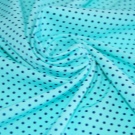


There is also software with various impurities.
- Ultrasoft (polyester 94%; elastane 6%) Is the most delicate fabric with invisible pile and jacquard pattern for sewing blankets, pillows, robes and blankets.
- Intersoft (polyester 30%; cotton 70%) - this is a mixed fabric, has increased strength and elasticity, is used for sewing trousers, sweatshirts, as well as clothing for outdoor activities.


- Niagara (polyester 97%; spandex 3%) is a light flowing fabric, reminiscent of rayon, but with reduced crease and increased strength. Such material is suitable for sewing not only blouses, but also evening dresses.
- Soft satin (polyester 10%; cotton 10%) material, very pleasant to the body, for sewing bed linen, shirts and children's textiles.


- Baby-soft (polyester fibers 20%; cotton 20%) - this is a double-sided fabric, from the front side it is jersey, from the seamy side - a pleasant to the touch artificial fur (intended for sewing outerwear: sweaters, cardigans, vests).
- Stretch soft (contains from 1% to 30% elastic fibers) is a fabric that resembles velvet, but has increased elongation and has a much lower price. This material is well suited for sewing dresses, sports and homewear.


Blackout differs from all types of soft fabrics - it is a heavy three-layer curtain fabric:
- the seamy side consists of a light dense fiber without shine;
- then comes a layer of black polyester fibers;
- The acrylic front can be glossy, embossed or patterned.

It is worth noting that blackout has a very high ability to trap the sun's rays (up to 90 percent), suppresses the noise coming from the street when the window is open, and perfectly restrains the heat in summer heat due to the increased density of the material. The variety of textures and colors allows you to choose functional and stylish curtains for any interior.
Care Tips
It is recommended to wash bed linen (as well as clothes) made of soft fabrics in the manual or delicate mode in an automatic machine at a temperature not exceeding 40 degrees. Do not use bleach or aggressive detergents.

In no case should this matter be dried in drying machines, since the structure of the fibers will be disturbed by exposure to high temperatures and the material will lose its properties.
Drapes and curtains can be cleaned with a soft brush or vacuum cleaner, and you do not need to wash them often. After washing, there is no need to iron them, just squeeze them in the washing machine at 800 rpm and hang them to dry directly on the cornice, spreading them in width to the desired waves.

It is enough to dry clothes made of such material in a straightened form and it is not at all necessary to iron it with an iron, but if creases are formed due to spinning at high speeds (1200 revolutions), you can iron it with a slightly warm iron.
Stains from such material can be easily removed with soapy water.

Soft fabrics are striking in their diversity, give room for imagination and creativity, at the same time, they are unusually functional and, with proper care, retain their properties for many years.
For a description of the qualities of soft and supersoft fabrics, see the next video.








